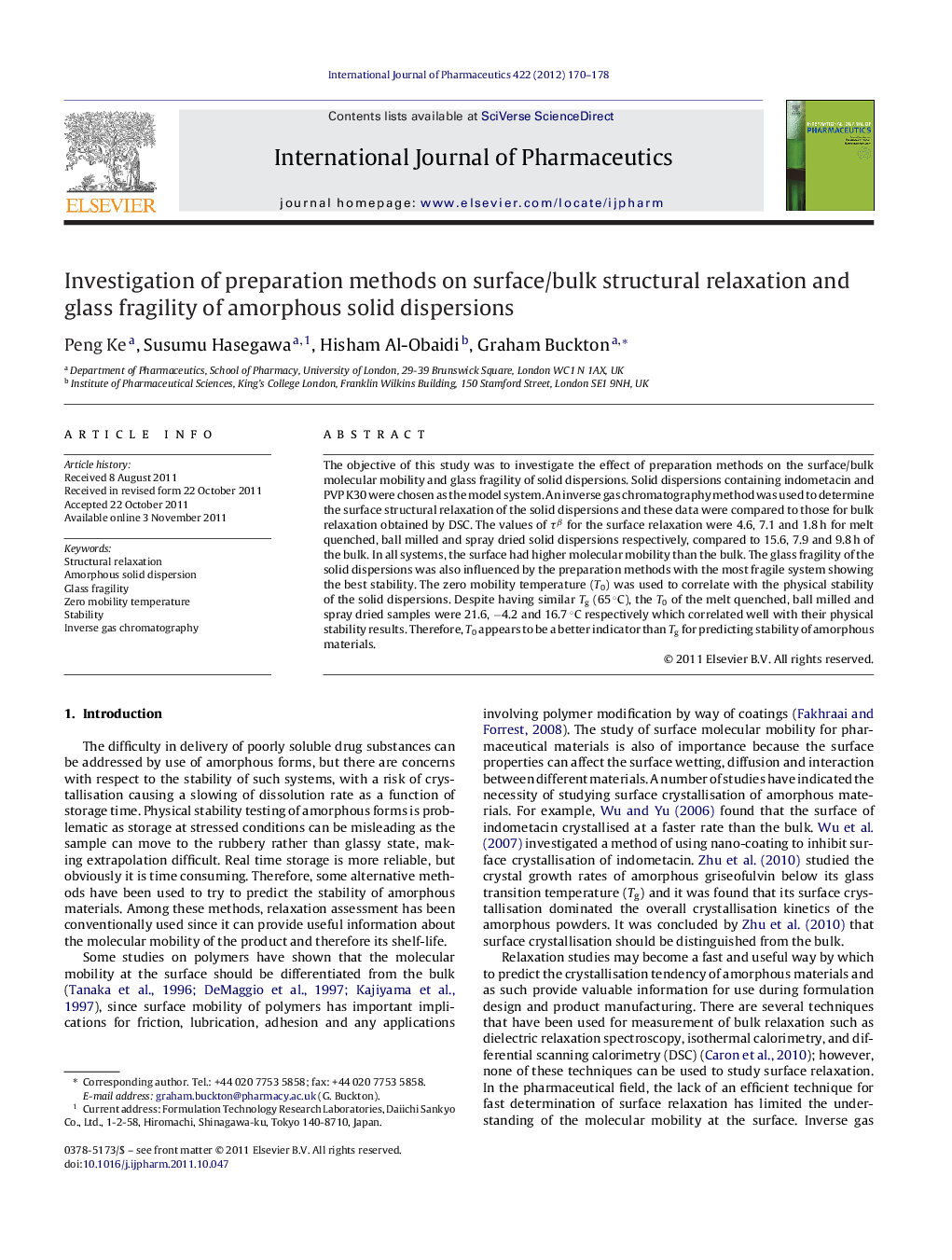| Article ID | Journal | Published Year | Pages | File Type |
|---|---|---|---|---|
| 2503096 | International Journal of Pharmaceutics | 2012 | 9 Pages |
The objective of this study was to investigate the effect of preparation methods on the surface/bulk molecular mobility and glass fragility of solid dispersions. Solid dispersions containing indometacin and PVP K30 were chosen as the model system. An inverse gas chromatography method was used to determine the surface structural relaxation of the solid dispersions and these data were compared to those for bulk relaxation obtained by DSC. The values of τβ for the surface relaxation were 4.6, 7.1 and 1.8 h for melt quenched, ball milled and spray dried solid dispersions respectively, compared to 15.6, 7.9 and 9.8 h of the bulk. In all systems, the surface had higher molecular mobility than the bulk. The glass fragility of the solid dispersions was also influenced by the preparation methods with the most fragile system showing the best stability. The zero mobility temperature (T0) was used to correlate with the physical stability of the solid dispersions. Despite having similar Tg (65 °C), the T0 of the melt quenched, ball milled and spray dried samples were 21.6, −4.2 and 16.7 °C respectively which correlated well with their physical stability results. Therefore, T0 appears to be a better indicator than Tg for predicting stability of amorphous materials.
Graphical abstractFigure optionsDownload full-size imageDownload as PowerPoint slide
